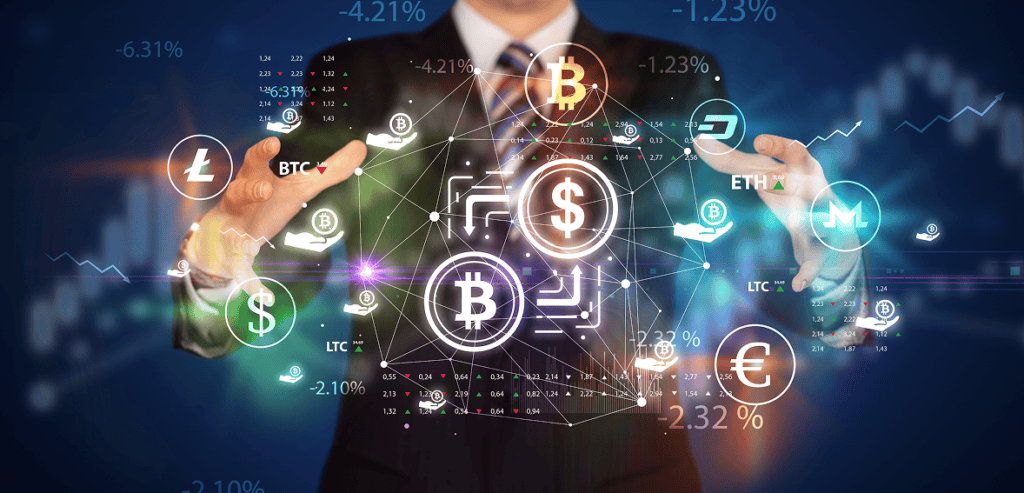
By Carol Sherman December 27, 2024
Payment processing is undergoing a revolutionary transformation, shaped by advancements in technology and shifting consumer expectations. As we move into 2025, businesses and consumers alike will encounter innovations that promise to make transactions faster, safer, and more inclusive. Here, we explore the trends that are set to redefine the future of payment processing.
The Rise of Biometric Authentication
Biometric technology has been steadily gaining traction, and by 2025, it is expected to become a mainstream component of payment processing. Fingerprint scanners, facial recognition, and even iris scanning are becoming more common, offering unparalleled security and convenience.
Biometric authentication eliminates the need for passwords and PINs, reducing the risk of fraud. With advanced encryption techniques, biometric data is stored securely, ensuring that even if systems are compromised, personal identifiers remain safe. For example, Apple Pay and Samsung Pay already leverage fingerprint and facial recognition for secure transactions, and this trend is set to expand across industries.
Retailers and e-commerce platforms are adopting biometric payment systems to enhance user experience. Imagine walking into a store, picking up your items, and walking out as a camera scans your face to automatically complete the transaction. Such seamless systems not only save time but also reduce errors in manual payment processing.
Moreover, biometrics open doors to inclusive financial services. Individuals who struggle with traditional banking, such as those without ID documents, can leverage biometric verification for secure account access. As this technology becomes more affordable and widespread, it will undoubtedly redefine the payment landscape.
Integration of AI and Machine Learning
Artificial Intelligence (AI) and Machine Learning (ML) are poised to revolutionize payment systems by enhancing efficiency, security, and personalization. These technologies allow payment processors to analyze massive amounts of data in real-time, identifying patterns that help detect and prevent fraudulent transactions.
AI-driven chatbots and virtual assistants are being integrated into customer support systems, offering immediate assistance with payment-related queries. For instance, if a transaction fails, an AI assistant can troubleshoot the issue instantly, improving customer satisfaction and reducing downtime.
Machine learning algorithms are also playing a pivotal role in dynamic pricing, personalized promotions, and credit scoring. Payment processors can analyze a user’s spending behavior to offer tailored discounts or flexible payment plans. These innovations not only enhance user experience but also drive business growth.
Another significant application of AI is in optimizing payment routes. For example, AI systems can determine the fastest and most cost-effective route for processing international transactions, reducing fees and settlement times. By 2025, we can expect AI and ML to become indispensable tools in payment processing, offering smarter and more efficient solutions.
Cryptocurrencies and Central Bank Digital Currencies (CBDCs)

Cryptocurrencies and Central Bank Digital Currencies (CBDCs) are reshaping the way we think about money. While cryptocurrencies like Bitcoin and Ethereum have been around for over a decade, their adoption for everyday transactions has been limited due to volatility and regulatory concerns. However, 2025 could mark a turning point.
CBDCs, issued and regulated by central banks, offer the stability of fiat currencies combined with the efficiency of digital transactions. Countries like China have already rolled out pilot programs for digital yuan, and other nations are following suit. These currencies promise faster cross-border payments, reduced transaction costs, and improved financial inclusion.
Meanwhile, private cryptocurrencies are gaining acceptance in mainstream commerce. Companies like Tesla and PayPal have started accepting Bitcoin for transactions, signaling a shift in perception. Blockchain technology, which underpins cryptocurrencies, ensures transparency and security, making it an attractive option for payment processing.
The rise of stablecoins—cryptocurrencies pegged to stable assets like the US dollar—is another trend to watch. Stablecoins offer the benefits of digital currencies without the volatility, making them ideal for everyday transactions. As regulatory frameworks evolve, cryptocurrencies and CBDCs are set to become integral to the future of payments.
Contactless Payments and Wearable Technology
Contactless payments have witnessed explosive growth, driven by the convenience and hygiene concerns brought to the forefront by the pandemic. By 2025, the adoption of contactless payment methods is expected to soar, supported by advancements in wearable technology.
From smartwatches to payment-enabled rings, wearable devices are transforming the way we pay. These gadgets allow users to make quick and secure payments by simply tapping or waving their device near a terminal. This trend is particularly appealing to younger, tech-savvy consumers who prioritize convenience.
The expansion of near-field communication (NFC) technology is a key enabler of contactless payments. NFC-enabled devices offer high-speed, secure data transfer, ensuring that transactions are completed in seconds. Businesses are increasingly upgrading their infrastructure to support these technologies, recognizing the demand for faster checkout experiences.
Furthermore, contactless payments are paving the way for a cashless society. In cities like London and Singapore, public transportation systems already rely heavily on contactless cards and wearables. As this trend gains momentum, we can expect a significant reduction in the use of physical cash, leading to a more efficient and traceable payment ecosystem.
Enhanced Security with Blockchain Technology
Security has always been a cornerstone of payment processing, and blockchain technology is emerging as a game-changer in this space. Known for its decentralized and tamper-proof nature, blockchain provides a secure foundation for transactions, reducing the risk of fraud and cyberattacks.
In traditional payment systems, intermediaries are often involved, creating vulnerabilities and increasing transaction costs. Blockchain eliminates these intermediaries, allowing peer-to-peer transactions with enhanced transparency and security. Each transaction is recorded in a distributed ledger, making it nearly impossible to alter or delete.
One promising application of blockchain in payment processing is in supply chain finance. Businesses can use smart contracts to automate payments upon the completion of predefined conditions, ensuring efficiency and reducing disputes. For instance, a supplier could receive payment automatically once goods are delivered and verified.
Blockchain also enhances cross-border payments by minimizing delays and fees. Traditional systems rely on multiple banks to process international transactions, leading to inefficiencies. Blockchain-based payment networks streamline this process, enabling faster settlements at lower costs. By 2025, blockchain is expected to play a pivotal role in shaping secure and efficient payment ecosystems.
Growth of Embedded Finance
Embedded finance refers to the integration of financial services within non-financial platforms, creating seamless and context-driven payment experiences. By 2025, this trend is expected to revolutionize industries, enabling businesses to offer tailored financial solutions directly to their customers.
Imagine purchasing a product online and being offered a buy-now-pay-later (BNPL) option at checkout, or booking a ride and seamlessly paying for it within the app. These are examples of embedded finance in action. By removing the need for third-party apps, embedded finance simplifies transactions and improves user experience.
Companies like Uber, Amazon, and Shopify are pioneers in this space, offering in-app payment solutions that are both convenient and secure. This trend is gaining traction among small businesses as well, allowing them to compete with larger players by offering innovative payment options.
Embedded finance also opens up new revenue streams. For instance, e-commerce platforms can partner with financial institutions to offer credit or insurance, earning a share of the profits. As businesses recognize the potential of embedded finance, its adoption is set to grow exponentially.
The Push for Sustainability in Payments

As consumers become more environmentally conscious, sustainability is emerging as a critical focus area in payment processing. By 2025, businesses are expected to adopt eco-friendly practices to meet consumer demands and reduce their carbon footprint.
One way payment processors are addressing sustainability is by transitioning to digital receipts and statements. This shift reduces paper waste and aligns with the growing preference for digital communication. Additionally, renewable energy-powered data centers are being used to process transactions, minimizing environmental impact.
The rise of green payment cards is another noteworthy trend. Made from recycled materials or biodegradable plastics, these cards offer a sustainable alternative to traditional payment methods. Some companies are even incentivizing eco-friendly behavior by rewarding users for sustainable purchases.
Moreover, blockchain technology contributes to sustainability by increasing transparency in supply chains. For instance, consumers can trace the origin of products to ensure they meet ethical and environmental standards. As sustainability becomes a priority, payment processors are likely to innovate further, promoting greener financial ecosystems.
Conclusion
The future of payment processing is brimming with possibilities, driven by technological advancements and evolving consumer needs. From biometric authentication and AI-driven personalization to blockchain security and sustainable practices, the trends shaping 2025 promise a more efficient, secure, and inclusive payment landscape.
As these innovations unfold, businesses and consumers must stay informed and adaptable to leverage the opportunities they present. The era of cashless, seamless, and intelligent payments is not just on the horizon—it is rapidly becoming our reality.